- Home
- Fishing Tips
- Surf Fishing Tips
10 Top Surf Fishing Tips
That Will Get Results!
Want to catch more fish off your local surf beach? Then these surf fishing tips will help put you on the road to success.
After all it's tempting when fishing a surf beach for the first time to cast your bait as far as you can and hope for the best. Not always a good idea...
How much better you'd do if you knew what type of seabed you're
fishing over, where the fish holding spots are, and what would be the
best time to put your bait in front of them.
Read on for the surf fishing tips that answer these questions, and more...
Surf Fishing Tip #1 ~ The Low-Water Survey
The first of these surf fishing tips requires that you take a walk along the beach at low tide, preferably a low-water spring tide. Think like a crime scene investigator, and...
- Make a note of where the gullies, hollows and banks are.
- Does the nature of the seabed change at all? Sand, shingle, mud...?
- Any sign of shellfish beds? Cockles, razorfish, mussels etc?
- Any patches of weed and rough ground?
- Are there any tackle-robbing (but fish-attracting) obstructions you need to be aware of?
- Take this exploration one stage further by casting a bare lead (no hooks) from the low water mark. Bring it in slowly and you'll be able to feel changes in seabed conditions and contours.
This is really valuable data which can make all the difference to your catches. Make notes and sketches in a note book and you'll find yourself referring to it time-and-time again.
Surf Fishing Tip #2 ~ Read the Surf
But nothing stays the same for long. Tides and currents shift sand banks and gullies, storms can destroy shellfish beds and create new seabed features. And at high water, with one patch of surf looking very much like another and with all the evidence covered, it's not always easy to relate your notes to what's below the surface.
At first glance, one patch of surf might look very much like another - but does it? Take a closer look...
- It will look 'different' where it swirls around a submerged rock
- Short, breaking seas will betray a shallow sand bank, whilst smoother flatter seas indicate the presence of deeper water - a fish-holding gully.
So with the information from you low-tide survey, and the evidence provided by the changes in the surf, you'll have a very good idea as to where to place your bait.
Surf Fishing Tip #3 ~ Watch the Weather
Many surf anglers like to fish in an offshore wind, for the simple reason that it's easier to make longer casts. But an offshore wind calms the sea, particularly so in periods of high atmospheric pressure, which produces clear waters.
In these conditions fish are likely to hang out in deeper water offshore during daylight hours, only becoming brave enough to venture close-in during the hours of darkness.
Strong winds, low atmospheric conditions and bigger seas are more likely to get results when surf fishing during the daytime.
Surf Fishing Tip #4 ~ Be There at the Right Time
'Time and Tide Waits for No Man' goes the saying, and it's one that's very appropriate for anglers wanting to learn how to surf fish effectively.
On most surf beaches it seems that the fishing is best in the two hours coming up to high water and the two hours following high water - and all the more so if it's a spring tide. But the period of high water itself - when the tide is slack - is often not a prolific period.
For instance, if high tide is at 0900hrs, then probably nothing much will be happening from 0830hrs to 0930hrs. But when the tide is flooding from 0630hrs to 0830hrs is likely to give you the best chance of catching, and again between 0945hrs to 1145hrs when it's ebbing.
Fish nearly always feed better in low light conditions, making dawn and dusk particularly prolific times.
Perhaps the most important of these surf fishing tips is that you...
Find a day when high water occurs at dusk or dawn and plan your surf fishing trip around that vital piece of data.
Surf Fishing Tip #5 ~ Understand the Tides
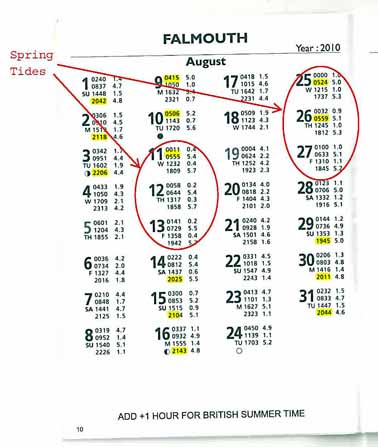
The first two tips have been around tides and time, and the place to get this information from is a set of tide tables, like the example on the right.
The first thing to do is to mark the tides where high water falls around dawn or dusk. Here, I've high-lighted these in yellow.
Next identify the periods of spring tides, as encircled here.
Spring tides occur when the sun, moon and earth are in line, and the sun and moon's gravitational forces work in unison to create the maximum tides on earth. You can see how this works here...
Spring tides always occur a day or two after a full moon and a new moon, and these are usually shown by a blacked-in circle (for a full moon) and an empty circle (new moon) as shown here on the 10th and 24th August.
If one or more of your dusk/dawn tides falls within a spring tide range, your chances of a good catch are probably at their highest. The early morning high tides on 25th and 26th August look promising...
Surf Fishing Tip #6 ~ Learn to Tie the Best Shore Rigs
Surf fishing rigs must satisfy three essential requirements:~
- be aerodynamic in flight to enable long casting, and
- to present the bait on the seabed in a natural appearance, and
- to securely mount the bait whilst enabling the hooks to be unobtrusive yet take hold in a fish's mouth.
The aerodynamic requirement means that the basic form of a shore rig is a paternoster - essentially a rig with a lead weight on the end and one or more hooks attached on short snoods above the weight. All the well-known shore rigs - flapper rigs, clipped rigs, pulley rigs and wishbone rigs - are derivations of this basic form.
How to tie them? Easy, cheat! Just buy a professionally made one of each type and copy them shamelessly.
Now here's the tip...
When you replicate the shore rig you've purchased as a pattern, don't use nylon monofilament when you tie your own. Use fluorocarbon line - it's virtually invisible under water, much more so than any other type of line. OK, it's not cheap, but you won't need a lot of it and it might just get you the fish of a lifetime.
Surf Fishing Tip #7 ~ Avoid Crack-Offs on the Cast
Shock leaders must be used when surfcasting - without one, a crack-off is far more likely. Of course, crack-offs don't just represent a needless loss of fishing gear, they are also highly dangerous for any other beach user.
| Lead Weight | Leader Strength |
6oz |
60lb |
8oz |
80lb |
4oz |
40lb |
The breaking strain of the shock leader is related to the weight of the lead, not the breaking strain of the main line. The heavier the weight, the greater the load that its kinetic energy will generate on the cast, hence the greater the breaking strain of the leader must be.
The accepted wisdom is that the shock leader (in lbs breaking strain) should be 10 times the weight of the lead (in lbs), as shown in the table here on the right.
Use nylon monofilament line to make up the shock leader, but not 'ordinary' mono. The problem with mono intended for your reel line is that it's stretchy, which surprisingly isn't what you want for a shock leader. OK, it will work fine, but much of your casting energy will be absorbed by the elasticity of the leader rather than powering up the rod.
So here's one tip...
Make up your surfcasting shock leaders from one of the low-stretch, abrasion resistant nylon monofilament lines that are produced specially for the purpose.
There are several knots suitable for connecting the shock leader to the main line, but I use the Albright Knot for this. But whichever knot you use, it can catch in the rod guides or get caught up in the coils of line on the reel spool. And the larger the diameter of the shock leader, the bigger will be the knot - and the greater the problem.
The solution? Use a tapered leader...
A typical 13m long tapered shock leader starts with 9m (30ft) of 0.8mm (65lbs) high impact shock resistance mono and tapers over the remaining 4m (13ft) down to 0.37mm (16lbs). The benefit of course is that you're now connecting lines of similar diameter, so the leader knot (I use two uni-knots back-to-back) will be much smaller and will whizz through your line guides with ease.
Surf Fishing Tip #8 ~ Use a 'Thumby'
If you use a baitcast reel for surfcasting rather than a spinning reel, you'll know that the spool can slip under your thumb when casting, particularly in wet weather. Cut a finger from a rubber glove and put it on your thumb to prevent this happening.
This will also give you some protection from the leader knot, which can otherwise do your thumb some painful damage. It's worth making sure that you position the leader knot on the opposite side of the spool to where your thumb goes - if you can that is, but if your reel has a level-wind mechanism you won't be able to.
Surf Fishing Tip #9 ~ Don't Over-Cast
It's a bit of a macho thing with surfcasters, this 'I can cast further than you can' attitude. Of course it's no bad thing to be able to make casts of biblical proportions, but often it's not at all necessary. For ultimate super-long surfcasting there are three essential components:~
- High quality surfcasting gear
- A highly developed surfcasting technique
- The physique of the angler - providing the first two conditions are met, a good big'un always beats a good little'un!
But the key attribute of a good surf angler is recognising that casting halfway to the horizon won't always get you the desired results. What will though, is the ability to be able to cast accurately and consistently to the area you believe is holding the fish - and that's one of those you identified in the first of these surf fishing tips.
Surf Fishing Tip #10 ~ Rough Ground Fishing without Tackle Loss
Rough ground supports the food chain that fish are keen to exploit - crabs, small fish, shellfish etc - so it's not an area we can afford to ignore with our baited rigs. But the cost in terms of tackle cost can be high, so here's a few surf fishing tips that will go some way to minimise them:~
- It's often the lead weight that gets caught up as it trails astern of a hooked fish. The Pulley Rig has been designed to eliminate this risk by allowing the weight of hooked fish to pull the lead weight into a position ahead of the fish, where it is much less likely to get hung up;
- Use a rotten bottom, which is a short length of light line used to attach the lead weight. Then, if the lead gets hung up an you have to pull for a break, all you'll lose is your lead;
- Use a planing lead. These are flattened lead weights specifically designed for rough ground use. Their design causes them to plan upwards on the retrieve, clearing all obstructions on the seabed;
- Many anglers use old spark plugs instead of lead weights. OK, they aren't anything like as efficient for casting but it doesn't hurt the pocket so much when you lose them;
- Use a reel with a high rate of retrieve to get the gear up clear of all snags on the retrieve, as quickly as possible;
- Use a stiff, powerful rod so that you can quickly get your fish up clear of any snags. Soft-actioned rods will cost you both fish and tackle losses over rough ground.
Recent Articles
-
Sea Fishing Rods and Reels Must Be Compatible for a Balanced Outfit
Mar 08, 21 08:30 AM
A quality reel fitted to a quality rod doesn't necessarily make it a quality outfit. Your fishing rods and reels have to be properly matched if you're to get the best out of them, and here’s how -
Essential Lure Fishing Tips That All Saltwater Anglers Should Know
Mar 08, 21 04:51 AM
Which single lure fishing tip applies to trolling, jigging, baitcasting, spinning, fly fishing and any other branch of lure fishing? Well, it is the one at the top of this list -
Vital Jig Fishing Tips That You Really Cannot Afford To Miss!
Mar 07, 21 10:20 AM
Essential jig fishing tips to help you select the right lure for successful jig fishing, together with the techniques required to get the most out of your jig fishing outfit
















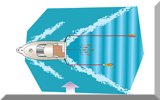

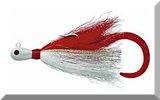
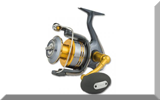
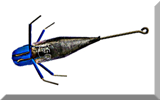
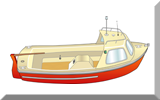
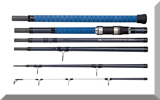
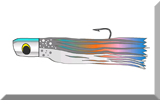
New! Comments
Have your say about what you've just read! Leave me a comment in the box below.